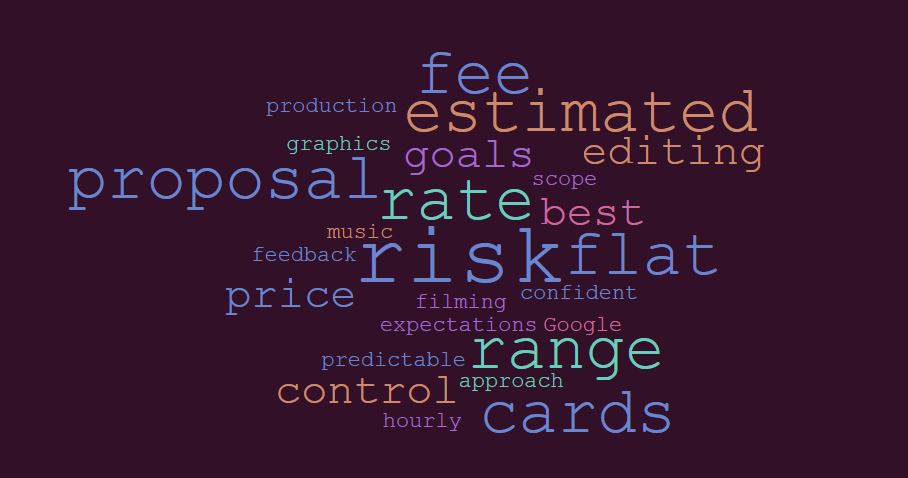A Guide to Evaluating Video Proposals
05 Jul 2018, Posted by in Art, Design, Life, Photoshoots, Private, Uncategorized
Creating a video is a pretty unfamiliar task for many small businesses. You may like the product the company produces, but you still need to know the cost. Unlike other products, there’s no standard proposal structure for video, and proposal pitches can take different forms. All of them have strengths and weaknesses, but some types of proposal have significant risks for the buyer. So what do you look for?
Different fee structures, different risks
A good video production proposal should provide either a precise cost or a specific range of costs, and also information that describes the video goals, scope, and recommendations.
I’ve outlined the three most common proposal types, along with the associated risks for the client.
Flat Fee/Project Fee. Flat fees provide an exact amount your will be charged for the production. Any financial risk is absorbed by the company, and it’s generally a sign that the company is confident about their ability to meet your expectations. However, flat fees should be accompanied by a clear description of the project, the activities, and the equipment to be used. To accomplish this, the company should have had a detailed conversation with you about your goals and vision; otherwise, your product is likely to be “canned.” Flat fee proposals should also include a number of editing revisions based on your feedback.
Estimate Range. This type of proposal provides a clear prediction of your final costs. The best type of range proposals offer different creative options or concepts (and thus a range of associated costs). If a producer offers an estimated range for a single concept, they’re probably not confident they can meet your expectations for the video and are trying to protect themselves.
Rate Cards. Rate cards provide the hourly rate for an activity, typically with an estimate of how long the project or activity will take. Unfortunately, they’re often a poor estimate of the final cost. Moreover, they can signal that the production company doesn’t stand by the quality of their work. Not only are time overruns frequent on every project, edits and changes based on your feedback will come at a price. However, if you anticipate a lot of back and forth on the project, an hourly rate may be the most reasonable approach.
Once you have the numbers in front of you, take a moment and let your gut weigh in. A price tag is still an apple to orange comparison. The production company’s experience, the past clients, technical ability, and the ease of working with them can impact the success of your video. Potential production partners should be flexible, ready to walk you through the numbers and make adjustments based on your conversation. Video isn’t a small-ticket item, so talk with the perspective companies and get to know them.

Sorry, the comment form is closed at this time.